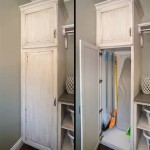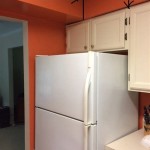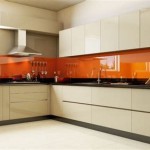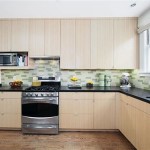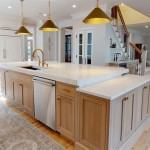Modern Kitchen Design Gallery: A Showcase of Innovation and Functionality
The modern kitchen stands as a central hub within contemporary homes, evolving beyond mere food preparation into a space for gathering, entertaining, and expressing personal style. A modern kitchen design gallery offers a curated collection of visual examples showcasing current trends, innovative solutions, and timeless principles that define this important space. By exploring such a gallery, homeowners, designers, and architects can gain inspiration, identify key design elements, and understand how to effectively integrate functionality with aesthetic appeal.
This article will explore key aspects of modern kitchen design, drawing examples from a hypothetical "Modern Kitchen Design Gallery." It will delve into the prevalent aesthetic styles, the importance of material selection, effective layout strategies, and the integration of technology to create a functional and beautiful kitchen environment.
Embracing Minimalist Aesthetics and Clean Lines
A recurring theme within modern kitchen design is the embrace of minimalism. This aesthetic emphasizes simplicity, functionality, and a lack of unnecessary ornamentation. In a "Modern Kitchen Design Gallery," one would likely observe several kitchens characterized by clean lines, uncluttered countertops, and a focus on essential elements. Cabinets often feature flat-panel doors devoid of intricate detailing, utilizing push-to-open mechanisms or integrated pulls to maintain a seamless appearance. Color palettes typically lean towards neutral tones such as whites, grays, and beiges, creating a sense of spaciousness and airiness. Accents of color might be introduced through backsplash tiles, appliances, or strategically placed accessories.
The minimalist approach extends beyond visual aesthetics to encompass functional considerations. Storage solutions are designed to be discreet and efficient, maximizing space utilization and minimizing clutter. Integrated appliances, such as refrigerators and dishwashers concealed behind cabinet panels, further contribute to the streamlined appearance. The goal is to create a calming and organized environment that promotes ease of use and visual harmony.
Contrastingly, while minimalism reigns supreme, some modern kitchens incorporate elements of other styles. For instance, Scandinavian-inspired designs often blend minimalist principles with natural materials like light wood and organic textures. Industrial-inspired kitchens may incorporate exposed brick, metal accents, and a raw aesthetic while still adhering to the clean lines and functional focus of modern design.
The Significance of Material Selection and Texture
Material selection plays a crucial role in defining the character and longevity of a modern kitchen. The "Modern Kitchen Design Gallery" would showcase a diverse range of materials, each contributing to the overall aesthetic and functional performance of the space. Countertops, for example, are available in various materials such as quartz, granite, marble, and solid surface. Quartz, a engineered stone, is a popular choice due to its durability, stain resistance, and wide range of color options. Granite offers a natural stone option with unique veining and patterns, while marble provides a luxurious and elegant aesthetic, albeit with higher maintenance requirements. Solid surface materials, like Corian, offer seamless integration and design flexibility.
Cabinetry materials range from wood veneers and laminates to painted MDF and metal. Wood veneers offer the warmth and natural beauty of wood, while laminates provide a cost-effective and durable option in various colors and finishes. Painted MDF allows for a smooth, uniform finish and can be easily customized to match specific color palettes. Metal cabinets, often stainless steel, offer a sleek and contemporary aesthetic, particularly suited for industrial-inspired kitchens.
Backsplashes provide an opportunity to introduce texture, color, and visual interest to the kitchen. Common backsplash materials include ceramic tile, glass tile, natural stone, and metal. Subway tiles, a classic choice, remain popular in modern kitchens, often arranged in creative patterns or with contrasting grout colors. Glass tiles offer a reflective surface that enhances light and creates a sense of spaciousness. Natural stone, such as marble or slate, adds a touch of luxury and texture. Metal backsplashes, often stainless steel or copper, provide a durable and contemporary option.
The interplay of different materials and textures is essential in creating a visually appealing and tactilely interesting kitchen. Combining smooth surfaces with textured elements, such as wood grain, exposed brick, or patterned tiles, adds depth and character to the space. The overall goal is to create a balanced and harmonious composition that reflects the homeowner's personal style and preferences.
Optimizing Layout and Functionality for Efficiency
Beyond aesthetics, modern kitchen design prioritizes functionality and efficiency. The layout of the kitchen is crucial in determining how effectively the space can be used for food preparation, cooking, and other activities. A "Modern Kitchen Design Gallery" would showcase various layout options, each tailored to different space constraints and lifestyle needs. The most common kitchen layouts include the U-shaped, L-shaped, galley, and island layouts.
The U-shaped kitchen provides ample countertop space and storage, making it ideal for larger kitchens with multiple cooks. The L-shaped kitchen is versatile and can be adapted to various room sizes, offering a balanced combination of countertop space and storage. The galley kitchen, characterized by two parallel runs of countertops and cabinets, is a space-efficient option for smaller kitchens. The island layout incorporates a freestanding island unit, providing additional countertop space, storage, seating, and a focal point for the kitchen.
The placement of key appliances and work zones is essential in optimizing kitchen functionality. The "work triangle," which connects the refrigerator, sink, and cooktop, is a fundamental principle of kitchen design. Ideally, these three elements should be arranged in a triangular configuration with minimal obstructions to allow for efficient movement between them. Considering the individual workflow patterns of the homeowner is also paramount. The inclusion of dedicated prep areas, baking stations, or beverage centers can enhance the functionality of the kitchen and cater to specific needs.
Storage solutions play a critical role in maximizing space utilization and organization. Modern kitchens often incorporate pull-out shelves, drawer dividers, and pantry organizers to keep items neatly stored and easily accessible. Vertical storage solutions, such as tall cabinets and wall-mounted shelves, help to maximize vertical space and minimize clutter on countertops. Intelligent lighting design, including task lighting, ambient lighting, and accent lighting, is crucial in creating a well-lit and functional kitchen environment. Task lighting, such as under-cabinet lighting and pendant lights, provides focused illumination for specific work areas. Ambient lighting, such as recessed lighting and chandeliers, provides overall illumination for the kitchen. Accent lighting, such as spotlights and strip lighting, highlights specific features and adds visual interest.
Integrating Technology and Smart Features
The modern kitchen is increasingly incorporating technology and smart features to enhance convenience, efficiency, and connectivity. A "Modern Kitchen Design Gallery" would showcase various examples of integrated technology, ranging from smart appliances to automated lighting systems. Smart appliances, such as refrigerators, ovens, and dishwashers, can be controlled remotely via smartphone apps, allowing homeowners to monitor cooking progress, adjust settings, and receive notifications. Voice-activated assistants, such as Amazon Alexa and Google Assistant, can be integrated into the kitchen to control lighting, play music, set timers, and provide hands-free access to information.
Touchless faucets and soap dispensers promote hygiene and convenience, minimizing the spread of germs. Automated lighting systems allow homeowners to control lighting levels and create customized lighting scenes with ease. Smart storage solutions, such as automated pantry shelves and refrigerator organizers, help to keep food fresh and organized. Integrated charging stations provide convenient locations for charging smartphones and other devices. Under-cabinet lighting can be programmed to automatically illuminate when motion is detected, providing hands-free illumination for nighttime tasks.
The integration of technology into the kitchen should be seamless and intuitive, enhancing the overall user experience without compromising the aesthetic appeal of the space. The goal is to create a kitchen that is not only beautiful and functional but also technologically advanced and connected.
Exploring a "Modern Kitchen Design Gallery" offers a valuable opportunity to understand the key principles and trends that define contemporary kitchen design. By considering the factors outlined in this article—aesthetic styles, material selection, layout optimization, and technology integration—homeowners, designers, and architects can create kitchens that are both visually stunning and highly functional, reflecting the evolving needs and lifestyles of modern living.

40 Modern Kitchen Design Ideas

28 Best Modern Kitchens 2024 Kitchen Design Ideas

10 Features Every Contemporary Style Kitchen Must Have

Modern Kitchen Cabinet Design

50 Luxury Modern Kitchen Design Ideas That Will Inspire You

16 Modern Kitchen Design Ideas For Your Home Designcafe

Five Must Know Trends For Modern Kitchen Design Cottages Gardens Interior

51 Luxury Modern Kitchen Sleek Inspiring Design

50 Luxury Modern Kitchen Design Ideas That Will Inspire You

Kitchen Ideas Image Gallery Premier Kitchens
Related Posts


